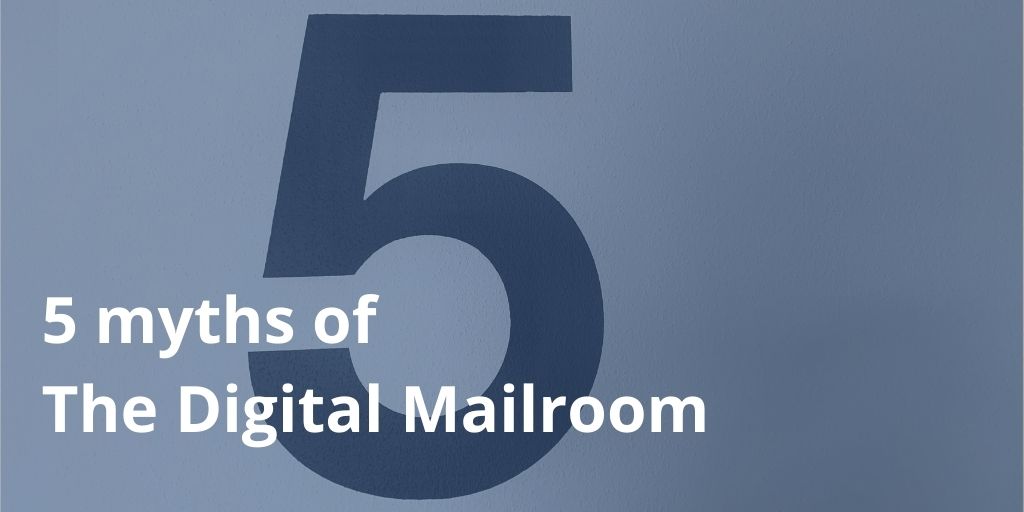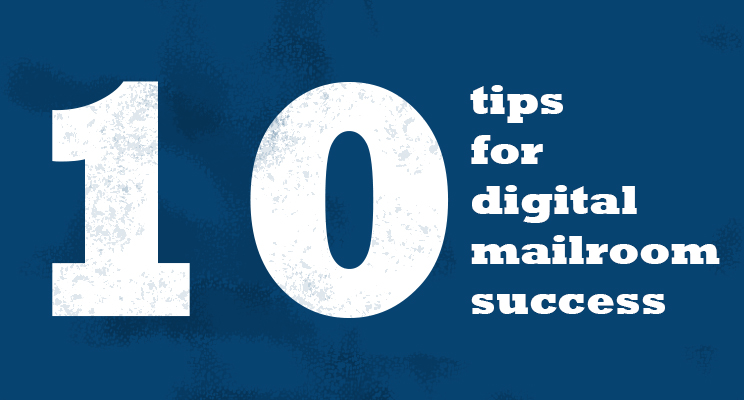

How do you manage your incoming documents?
A leading global analyst said last week that 77% of companies still rely on paper-based processes. The other 23% still receive documents via email and uploads to a website, and out of all these documents, it is estimated that up to 70% of them are in a semi or unstructured nature.
What does this mean?
Well, if you get a form that is in a set layout and all the information is always in the same location, then that is a structured document, think of your driving license or passport. This can be easy to deal with, but of course, there are lots of driving license formats and lots of passports, and this is the easy form of documentation to deal with.
Much harder are semi-structured documents, think for example about an invoice, here all the data is typically the same from document to document but might be in totally different locations.
Finally, the hardest documents of all are unstructured documents. Think of a letter or email from a customer, what is it about? You don’t know until you read it.
So, what we are saying is that 70% or more of the communications and documents you will receive are in the semi or unstructured category or, really hard to process, and the rest might just be tricky.

How much do you know about your mail?
Imagine that you were asked about your incoming mail, what could you answer from these questions?
- How many inbound communications have you had today, what was their source? Email, web upload, or paper that was scanned?
- Exactly how much time and effort did it take to ingest the data from those documents into all the workflows and systems that you run?
- How many of those documents were in good order and how many of them lacked vital pieces of information that you needed to process them effectively?
- How many documents came in from any source so urgent that without immediate attention you might face litigation, losing a customer, or upsetting a trading relationship?
- Can this process be automated and run at any time of day or night?
If information takes too long to process into your organisation, employees and customers alike will become frustrated, so is there a better solution?

Quick fix or a long-term solution?
If you can remember a time before the current pandemic, our organisations were full of competing business objectives striving to improve our customer and shareholder value. Then along came COVID-19, and previously sub-optimal business processes became a business continuity crisis. Just imagine if you couldn’t get anyone into an office, who was going to open the post and process orders, applications, invoices, and customer correspondence?
COVID-19 created the perfect storm for organisations to consider and need a Digital Mailroom. However, many decisions needed to be taken in a hurry to make the problem go away for now, and allow them to be considered in more detail later - for example, why not just outsource the handling of the post? Even before COVID-19, the benefits of a Digital Mailroom were compelling, but most organisations thought a Digital Mailroom was just about the post. This couldn’t be further from the truth.
The definition of a Digital Mailroom
To me a Digital Mailroom is the ability for an organisation to understand and capture all the needed content from any inbound communication.
Let’s unpack this a bit ...
What do I mean by understand and capture? Well simply put, if a human opened and read an email or physical letter, they would first understand what the communication was, they would classify it, and then capture all the relevant information. For example, if it was an invoice from a supplier, or a customer wanting to change address, they would know what they needed to be done.
An invoice would be routed to accounts payable who would check a valid purchase order, make sure the invoice wasn’t a duplicate and complied with all their other business rules, and if valid would then key all the data into their accounting system or ERP.
If it were a change of address this would kick off the process of checking and updating the CRM and requesting the relevant proving documents such as an updated driving license or utility bills etc. But I am not just talking about the post.
Incoming mail channels
Your organisation receives documents and information from multiple sources. Among them - the post, uploaded to your website, emails with or without attachments, messenger and web apps, External Websites, social media posts, updates to external portals, and of course call centres. A proper Digital Mailroom encompasses all of these.

Far too many organisations have wasted millions by investing in different technologies for different channels, business divisions, or geographical regions. The smart companies have invested in a single intelligent platform to do it all.
Over the last decade, the advances in artificial intelligence, machine learning, natural language processing, and experience of how to do this have moved on in leaps and bounds. If you think a digital mailroom is a scanner with some OCR software, then I am afraid you are at least 10 years out of date.
Like a decade ago, OCR still should stand for “Occasionally Correct Recognition” and a modern Digital Mailroom would still use multiple OCR engines, but only as a tiny part of its armoury (you actually need about 25 different methods all working together to create really efficient mailrooms - not a single OCR engine!).
However, most of the content we see in digital mailrooms today was born digital, for example, a pdf with a text layer does not need OCR, but it does need to be read and understood as a human would. This is the difference that makes the difference. If anyone is trying to sell you a process and says it is powered by ABBYY, Opentext (Recostar), or Nuance etc you should immediately become cautious. I would estimate that today only 20% of a digital mailroom's work would even need to use multiple OCR engines, and then it would need to consider the results from a number of them and use voting and evaluation criteria in combination. The rest is about the power of the algorithms and mathematics, the number of inbuilt techniques to find and understand information.
If you choose the right technology in the first place, then the benefits are compelling.
Business continuity
If you relied on people having to be in the office to open and process the post, then pandemic events like COVID-19 could prove disastrous. Now your post can be scanned anywhere - even a bureau using your technology - and you can receive the information immediately into your process. Making all processes common and digital, however, the document was born, mitigates risk from events such as office fires, pandemics, or any other disaster. It also creates a standard operating procedure for how you deal with inbound communications.
Increase in operational efficiency
Any Chief Operating Officer that has to look after inbound customer communications will know that you need to view this through three lenses, speed, accuracy, and control. You don’t want anyone of these to the exception of another - and that is exactly what a digital mailroom delivers, speed, accuracy, and control.
Compliance and standard operating procedure are automated and monitored throughout
As we mentioned above, having a robust process is often derived from creating and understanding the Standard Operating Procedure. Most digital mailrooms we deliver also create at the same time a globally usable standard operating model and bakes in the expected levels of automation and highlights immediately any exceptions and potential compliance breaches.
You can scale quickly to demand (our customers have coped with COVID-19 and mergers and acquisitions)
Having automation at the heart of your operations often means that if volumes double you only need to scale up the servers and infrastructure. A digital mailroom doesn’t care if it processes ten thousand documents a day or a million. When humans are only dealing with exceptions and machine learning is watching how things are done you can scale quickly or easily deal with peaks and troughs.
Internal costs per case reduce allowing you to compete and win more business at a higher margin
If you exist in a competitive marketplace then a digital mailroom is one tool you can use to do the job better and cheaper than your competitors. Ironically, having more automation has been proven time and again to not only increase customer satisfaction but also your employees as well.
Increase in Staff morale
Survey after survey keeps showing that automation improves the experience of the human at work. As a species, we haven’t evolved for tens of thousands of years to end up as drones keying information into a computer. With a digital mailroom, staff can focus on value-added knowledge work, and the automation platform and robotics eliminates manual tasks.
The Technology is now fit for purpose
Ten years ago, a digital mailroom would have been a massive million-pound project with hundreds of man-hours of consulting to map and semi-automate your business processes. Now the tools are becoming so easy to use that even a novice could start to set up their own highly intelligent platform in minutes. Behind this is decades of development to bring this technology to the point it can be adopted by the masses.
Globalisation
As we all increasingly work in a 24/7 global world, there are often reducing barriers to entry and your secure role in your supply chain could be disintermediated or replaced by a better, cheaper new entrant. Of course, if you have intelligently automated your processes then you will already be at the vanguard of winning new business from across the world and ensuring that more and more customers get to experience your world-class processes.
Recession – makes or break time
As each financial downturn arrives in waves (just like the good times) it has never been more important than to make the right decisions to survive. Satya Nadella said earlier this year when the pandemic struck that he had seen two years’ worth of digital transformation in two months. To weather the storm, you need your tightest ship, if your processes leak and creek then you are going to be in troubled waters.
Tempting to outsource
So, the easiest answer is to outsource your mailroom, right? Wrong, that is possibly the worst thing you can do. Are you also going to outsource your email handling, social media, and web traffic? No of course not. Why not outsource your customers whilst you are at it. Yes, other organisations may be set up to scan your post better than you, but you need them to scan into your digital mailroom so that the intelligent automation platform can process, monitor and control all your processes.
Customers expect it
Of course, the main reason you should invest in an intelligent automation platform and have it run your mailroom processes is that your customers expect it. They don’t care about your challenges, internal politics, or cost base. They demand excellent service 24/7 anywhere in the world however they want to talk to you. If they ring, write, email, or post they need you to understand what they want and do it now.
Conclusion
I have saved the best for last. A Digital Mailroom is only the first thing you should deploy with an intelligent automation platform. If you choose the right technology, there are hundreds and thousands of other automations waiting to happen across your organisation. So, what are you waiting for?

Want to know more?
Twofold Ltd assists businesses to overcome these challenges with our range of mailroom and data solutions. From mailroom equipment, scanning and capture, to document management and full digital transformation, contact us via the form here, or give the team a call on 0118 951 9800.
Tim Miller
Digital mailroom Specialist

.png?width=828&height=208&name=Twofold-Logos-no%20drop%20(1).png)



